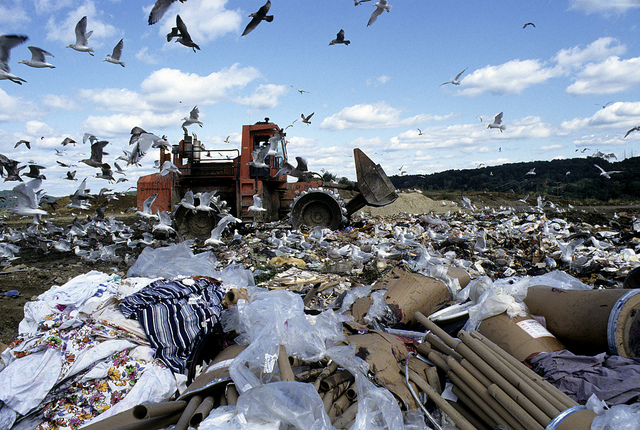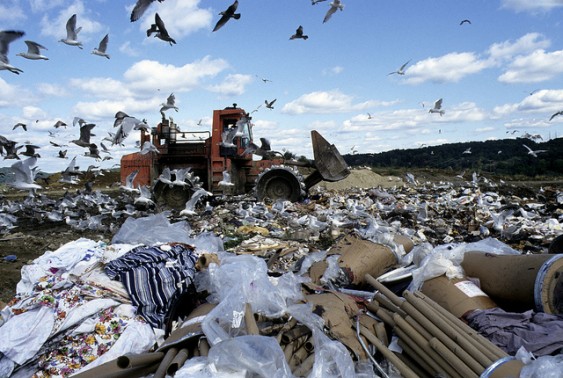Buying nothing new this year definitely has me rethinking my relationship with stuff. I’m throwing less away and stretching the life of things I already own—patching, mending, darning, gluing, duct taping, etc. So, the idea of “repair cafes” got my attention.
A couple of times a month in Amsterdam, people can bring their stuff to a community center where volunteers who like to fix things will give it new life—for free. The organizers (who serve coffee and cookies and call it a cafe) see it as a way to reduce waste, save money, and subvert our “throwaway” culture. Repair seems like a key component to reducing, reusing, and recycling. But, is repair dead? Dying? Or reviving?
In some sense repair as a way of life seems long dead. In a lot of the old fables and fairy tales I read my daughter these days, there are tinkers, cobblers, tailors, junk peddlers, and rag-and-bone men. Medieval Europeans just didn’t throw stuff away. Neither did my grandparents who’d lived through the Great Depression. But in more recent history—even as recently (ah-hem) as my childhood—back in the late ’70s and through the 1980s, there were still people who made a living in my little hometown repairing things. I remember the quiet, old guy with thick glasses and coveralls who repaired televisions, radios, tools and the like. He had a busy main street store front where, one by one, he revived the electronics piled up around him. There was a shoe repair shop. You could buy nifty iron-on patches for your denim pants at the drug store. My favorite of all, was the toy repair lady. She had a mile-high beehive hairdo and a tiny upstairs workshop in a creaky old building. She reattached a limb and put new hair on my favorite doll—a doll way too important to throw away.
How quaint that seems now, in our world of big box stores, online retailers, and planned obsolescence. Stuff breaks and falls apart all the time. But why fix it? Just throw it away and get a new one! Sure there are still some repair shops—for laptops, shoes, bikes, cars—but they are fewer and farther between. And that means getting stuff fixed up today is often prohibitively expensive. In fact, outside really big ticket items, it’s cheaper to buy new. (Take handheld devices like iPods and digital cameras for example: around $200 to fix; $250 to buy the shiny, new, faster, better, updated version.)
But, I’m heartened by what seems like a small but meaningful repair revival—for some, a necessity in this economy, and for many, a conscious backlash against our hyper-consumerist times. People are getting excited again about re-purposing, “up-cycling,” sharing, and tinkering! The Dutch repair cafes are one example (and the idea may be spreading) and national publications like Good Magazine devote a lot of ink to up-cycling, tinkering, and fixing; there are real, live, local happenings too.
For instance, a simple community project like the West Seattle tool library has spawned some amazing local repair clubs.
The West Seattle Fixers Collective is “fixing the world (or at least West Seattle).” They host DIY fix-it events that look like a good way to get your electronics repaired and a nice way to connect with neighbors too. (They’re two-for-two fixing KitchenAid mixers!) This is from their website:
The unpredictable projects range from re-sewing umbrellas to repairing home appliances, such as; kitchen mixers, laptops, espresso makers, desk lamps and even a few antiques. Members share a common interest of refusing to throw things out. They take true ownership of their belongings by taking them apart and figuring out how they work. They also get enjoyment by fixing their belongings themselves or helping others fix their broken possessions. Join them if you share these interests or just love tinkering.
And the West Seattle Spokespeople have been sponsoring free bike repair at Fixers’ meetings.
Yet another related Seattle community collective, RENEW, meets up to divert and re-purpose stuff headed for the landfill.
(I’m thinking we should start calling West Seattle “Little Amsterdam?”)
There’s some action in Oregon too (probably more than I know).
For ten years, residents of Ashland, Oregon, have held an “abundance swap” in early December as an alternative to shopping for new holiday gifts.
The City of Portland’s Be Resourceful site lists community resources for sharing and repairing, including bike and shoe repair places and the North Portland Tool Library, Northeast Portland Tool Library, and Southeast Portland Tool Library. There are several “swap and play” spaces where, as the name indicates, Portland families can not only get together to play, but can also swap outgrown toys and clothes. There’s also an online forum where Portlanders can share stories about their own resourcefulness.
The Missoula Urban Demonstration Project (MUD) has a tool library and community classes and resources for becoming all-around more self-sufficient.
Vancouver, BC, also has a tool library. They offer bike maintenance workshops. There’s also U-Fix-It Bike Works, a program for BC youth.
I’m on the lookout for other BC fixers—and more groups in Washington and Oregon too.
At the other end of the supply chain, “repair ware” designers are thinking about how we can once again make products that are durable and simple enough to repair at home. And mindful companies like Patagonia are making pledges to make quality stuff that won’t self-destruct right away, but also to repair their goods so that they don’t end up in a landfill prematurely.
There are lots of other good ideas out there.
What’s your repair story?











Alan Durning
The design-for-repair seems important to me. Mass production and automation have driven the cost of new products so low that it’s tough for labor-intensive repair to compete.
Watch repair is another example: I keep getting my watch repaired, even when it costs more than a new one would cost. I think a lot of people have at least one broken watch in their dresser drawers at home–too expensive to fix but too valuable-seeming to throw out.
If products are designed to make repair of key components easy, repair economics can work better.
Karen Schraven
Great for West Seattle… Did you know the Phinney Neighborhood Center has had a Tool Library for decades?
Not Fan
Sounds like yet another one of those empty feel-good gestures that enviro-fakers are always promoting. But hey, if you’d like to fix my toaster and tell yourself that you’re saving the planet, have at it! Just don’t electrocute yourself on my premises, or me. Thank you.
Anna Fahey
Gene from the West Seattle tool library also sent me the link to a map of tool libraries across the country . Thanks, Gene! They’re also looking to add fixer clubs and repair cafes to the map…so stay tuned.
As Karen points out, Seattle’s Phinney Neighborhood Center also has a tool library and all kinds of other community-building, sharing, saving, and carbon cutting resources. Do they have a fixer club?
And, Alan reminded me of watches. I fully acknowledge the irony when I report that the building we work in has a shoe repair place and a watch repair shop!
Anne Little
Missoula Urban Demonstration (MUD)Project has had a tool library for 31 years. We also have a truck share (2 pick-ups) and we’re trying to figure out a bus share for the local non-profits to use for events.
There are several reasons to fix things:
1) Less landfill
2) Less new resources needed for new stuff
3) Fixing = local job/skill
4) Really using things up – not just one component
5) Less infrastructure to move and store “garbage”
6) Inspiration to take better care of things initially
Vincent
Don’t forget the Fixers Collective in Brooklyn, NY! Even though we’re at http://fixerscollective.org our Facebook page gets the most activity. That’s where we post pictures of our fixing activity, including events like Compost for Brooklyn and most of all, World Maker Faire New York!
Anna Fahey
Here’s a cool YouTube video from Grist TV featuring the Fixers Collective in Brooklyn, NY (thanks, Vincent!) I LOVE the idea of “improvisational mending.”
And thanks, Anne at MUD. Your list is spot on. And from what I gather, you could add these: Make friends. Build community. Save money.
Rebecca
The Repair Cafe is such a brilliant concept! I’ve been trying hard to reduce consumption and reuse what I can, yet I find that my knowledge base is lacking in some departments – sewing, for one. A repair cafe could easily help me in this regard! My father-in-law used to say we live in a ‘disposable society’, and I agree. A revival in fields like tinkering would be so wonderful!